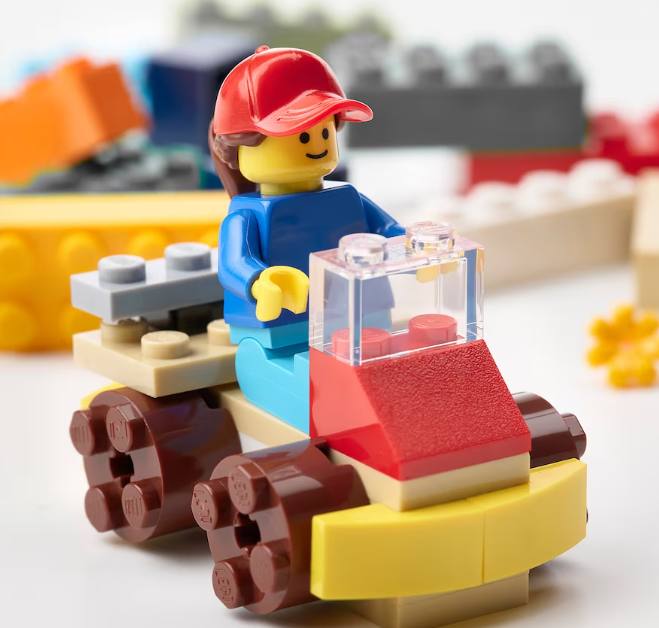
Lego vs. Jigsaw Puzzle: Which is the Better Activity for Kids and Adults?
Introduction:
When it comes to toys and games that promote cognitive development and creativity, both Lego and jigsaw puzzles are excellent options. But which one is better for kids and adults? In this blog post, we will explore the similarities and differences between Lego and jigsaw puzzles, their benefits, and which one might be the better choice for different age groups and skill levels.
Similarities Between Lego and Jigsaw Puzzles:
Lego and jigsaw puzzles share several similarities. Both require problem-solving skills, attention to detail, and patience. They can also be enjoyed alone or in a group setting. Additionally, both toys offer a sense of accomplishment when a project is completed.
Benefits of Lego:
Lego is a construction toy that allows for endless possibilities in building and creating. It promotes creativity, problem-solving skills, and spatial reasoning abilities. Lego sets come with instructions that provide a step-by-step guide to building a specific design. This allows for children to learn how to follow instructions and improve their sequencing skills. Lego sets can also be used to teach engineering concepts and physics principles.
In addition to cognitive benefits, Lego also offers social benefits. Building with Lego can be a collaborative activity that encourages teamwork, communication, and sharing. It can also foster a sense of community and belonging when working on projects with friends or family members.
Benefits of Jigsaw Puzzles:
Jigsaw puzzles are a classic and timeless form of entertainment. They offer many benefits for cognitive development, such as improving spatial reasoning, attention to detail, and problem-solving skills. Completing a jigsaw puzzle requires patience, concentration, and perseverance. It can also enhance memory skills and hand-eye coordination.
Jigsaw puzzles can be a relaxing and stress-reducing activity for adults, and a fun and challenging activity for children. They can also be used to teach children about shapes, colors, and patterns. Jigsaw puzzles come in various levels of difficulty, which makes them suitable for all age groups and skill levels.
Lego vs. Jigsaw Puzzle:
When comparing Lego and jigsaw puzzles, there are several factors to consider. Lego is a more versatile toy that allows for unlimited creativity and building possibilities. It can be used to teach engineering and physics concepts, and it promotes teamwork and social skills. On the other hand, jigsaw puzzles offer a more focused activity that enhances problem-solving and spatial reasoning skills. They can also be a relaxing and enjoyable activity for adults.
For children, Lego may be the better choice for those who enjoy building and creating. It allows for imagination and creativity while also teaching important skills such as following instructions and problem-solving. Jigsaw puzzles are better suited for children who enjoy a more focused and challenging activity that promotes spatial reasoning and attention to detail.
For adults, the choice between Lego and jigsaw puzzles depends on personal preferences. Lego can be a fun and creative way to destress and unwind, while jigsaw puzzles can be a relaxing and calming activity that enhances cognitive skills.
Brain Tree Jigsaw Puzzles offer a range of puzzles that cater to different age groups and skill levels. Our puzzles are made from high-quality materials, and they are designed to provide hours of fun and cognitive development. We believe that jigsaw puzzles are a great way to promote problem-solving, attention to detail, and spatial reasoning skills in both children and adults.
Conclusion:
In conclusion, Lego and jigsaw puzzles are both excellent toys that offer many benefits for cognitive development and creativity. The choice between the two depends on personal preferences, age group, and skill levels. Lego is better suited for those who enjoy building and creating, while In terms of skill development, both LEGO and jigsaw puzzles offer unique benefits that can be valuable for both children and adults. LEGO building can develop creativity, imagination, fine motor skills, and problem-solving abilities. Meanwhile, jigsaw puzzles can improve visual perception, spatial reasoning, attention to detail, and patience.
Both LEGO and jigsaw puzzles can also provide opportunities for social interaction and collaboration. Building with LEGO can be a group activity that encourages teamwork, communication, and shared decision-making. Similarly, working on a jigsaw puzzle with others can promote communication and cooperation while also providing a shared sense of accomplishment when the puzzle is completed.
When it comes to choosing between LEGO and jigsaw puzzles, there are a few factors to consider. One of the most important is personal preference. Some people may prefer the tactile experience of building with LEGO, while others may enjoy the visual and mental challenge of completing a jigsaw puzzle.
Another factor to consider is age and skill level. LEGO building may be more suitable for younger children who are still developing their fine motor skills and hand-eye coordination. Jigsaw puzzles may be more appropriate for older children and adults who have more developed visual perception and spatial reasoning abilities.
It's also worth noting that LEGO sets can be more expensive than jigsaw puzzles, and the cost can increase significantly as the complexity of the set increases. Jigsaw puzzles, on the other hand, are generally more affordable and accessible.
In terms of educational value, both LEGO and jigsaw puzzles can provide a valuable learning experience. LEGO building can help children develop creativity, problem-solving skills, and an understanding of engineering and physics concepts. Jigsaw puzzles can improve visual perception, spatial reasoning, and critical thinking skills.
However, it's important to note that these benefits can only be realized if the child is engaged and motivated to work on the activity. If a child doesn't enjoy building with LEGO or working on jigsaw puzzles, they may not be able to fully develop the skills and knowledge that these activities can provide.
Ultimately, the decision between LEGO and jigsaw puzzles comes down to personal preference and individual circumstances. Both activities offer unique benefits and can be enjoyable and rewarding for both children and adults. It's important to consider factors such as age, skill level, cost, and educational value when deciding which activity to pursue.
As a brand that specializes in jigsaw puzzles, Brain Tree Games offers a wide range of high-quality puzzles for both children and adults. Our puzzles are designed to challenge and engage, while also providing opportunities for skill development and social interaction. We believe that jigsaw puzzles can be a valuable addition to any household, offering a fun and educational activity that can be enjoyed by people of all ages and skill levels.
Click Here - Brain Tree Puzzle Collection
